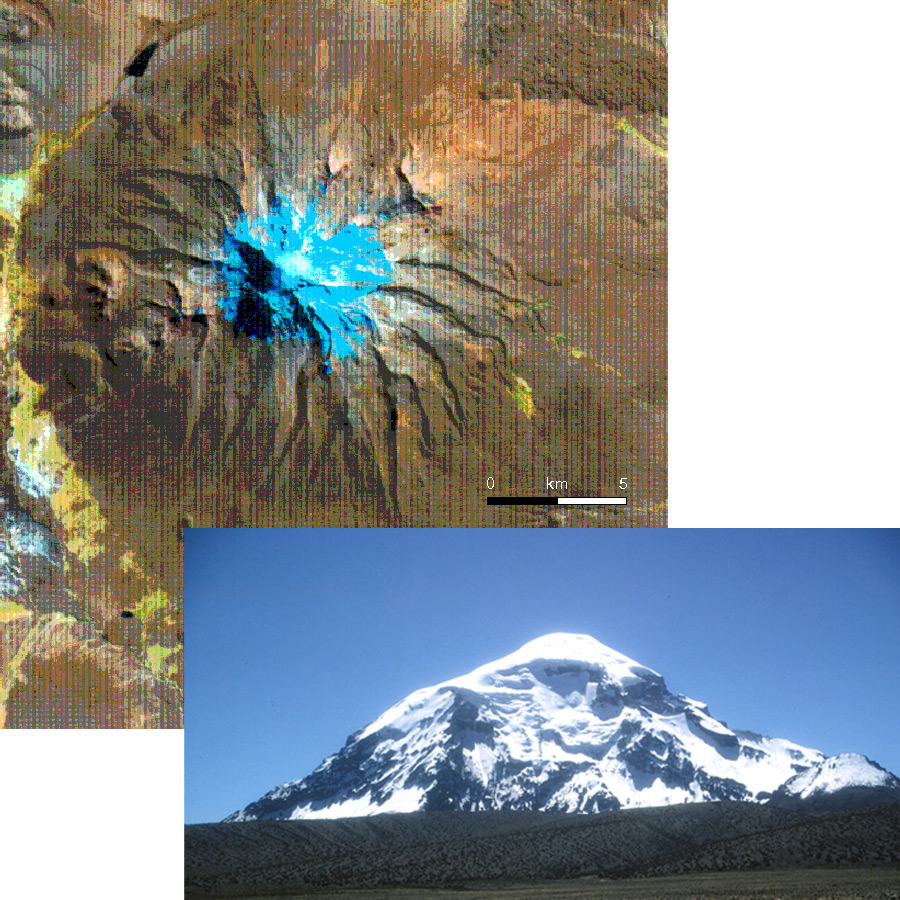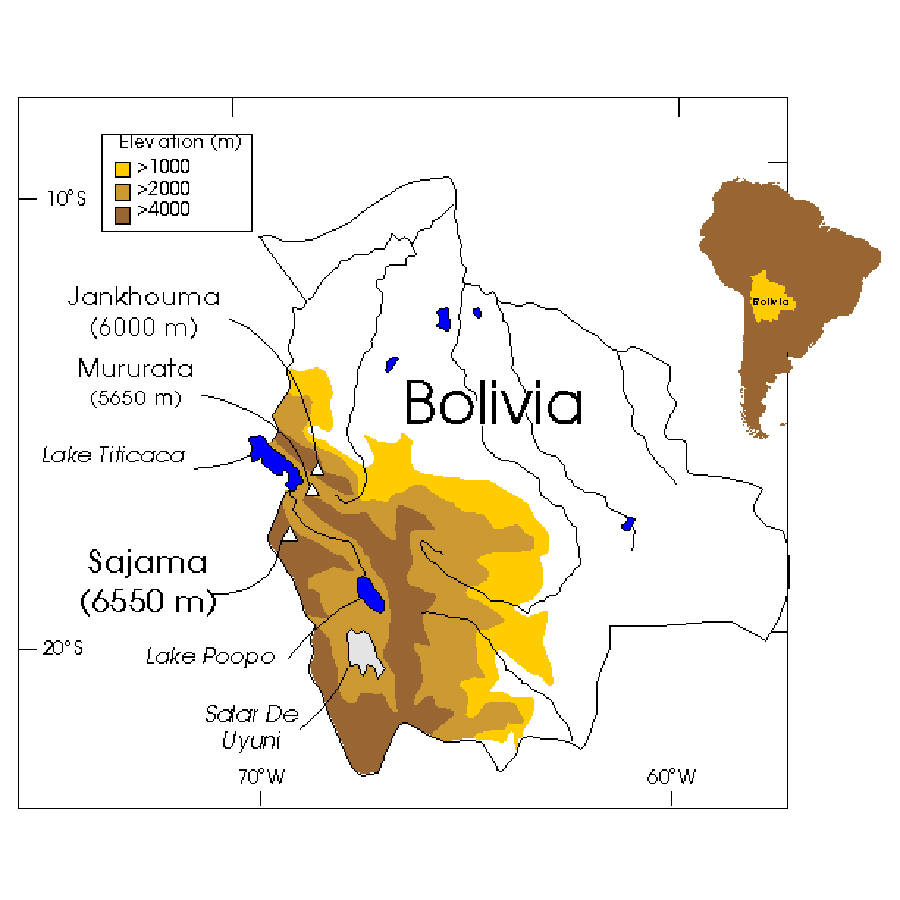Project Overview
The stratovolcano, Sajama (18o S, 68o W, 6,548 m) is the highest peak in Bolivia and is on the second highest plateau in the world, the Bolivian Altiplano. A glacier with a depth of about 115 m covers the summit. Because evidence suggests that the ice is frozen to bedrock and precipitation is very low, a deep core drilled to bedrock may provide a very long record of climate change. Sajama was carefully selected after consideration of numerous locations including Sajama, Jankhouma and Mururata, short cores ( <20 m) have already been recovered.
It is important to retrieve tropical ice cores since, recent warming is causing the ice to retreat rapidly at an accelerating rate, destroying the fragile climate record stored in the ice. Sajama is particularly interesting since it fills the gap between other glacial records to the north (Huascarán and Quelccaya, Peru) and to the south (Dyer Plateau, Antarctica). In conjunction with other records, Sajama will become part of a transect of the Americas in an international project with Past Global Changes (PAGES) Pole Equator Pole (PEP) I program.
Many useful data sets should be gained from a deep ice core from Sajama providing us with a more extensive view of short-term climate variability in the South American Highlands. A secondary objective is to expand our view of climate variability by integrating the South American ice core histories with those available from middle and high latitudes. Such a suite of comparable records are essential to understanding the climate system which depends upon an historical perspective of the magnitude and synchroneity of natural climate variability and rates at which natural changes in the system have occurred. Other climate changes that should be obtained from this ice core of a more scientific concern are the issues of increasing CO 2, CH4, and other trace gases, global scale events like El Niño-Southern Oscillation, the Little Ice Age, abrupt climate changes, and glacial/interglacial stage transitions. Longer records must be calibrated using shorter, better-resolved records for the last few thousand years. Sajama will provide an invaluable record for future prediction. This study is being conducted with members from the Department of Geological Sciences and Byrd Polar Research Center of The Ohio State University, University of Massachusetts and the University of Washington. This summer (1996) the Climate Group at the University of Massachusetts will install automatic weather stations on Sajama and on Illimani. The ice core drilling part of this project is funded by NOAA.
Updates on the 1997 ice core retrieval field program and the servicing of the weather station are available at the Umass site.


Data
NGDC News Story (2001):
A 25,000 year tropical climate history from Bolivian ice cores
Available Data:
Sajama (BOL; 18S,69W)
Accumulation Reconstruction (Thompson,L.G.)
Age Model (Thompson,L.G.)
d18O, Ion, and Particle Data by Depth (Thompson,L.G.)
d18O, Ion, and Particle Data, 100 Year Averages (Thompson,L.G.)
Data Description (Thompson,L.G.)
World Data Center for Paleoclimatology Mirror (Ice Core Gateway):
Key paper:
Thompson, L.G., M.E.Davis, E.M.Thompson, T.A.Sowers, K.A.Henderson, V.S.Zagorodnov, P.N.Lin, V.N. Mikhalenko, R.K.Campen, J.F.Bolzan, J.Cole-Dai and B.Francou. A 25,000 year tropical climate history from Bolivian ice cores. Science, 282(5295), 1858-1864.
